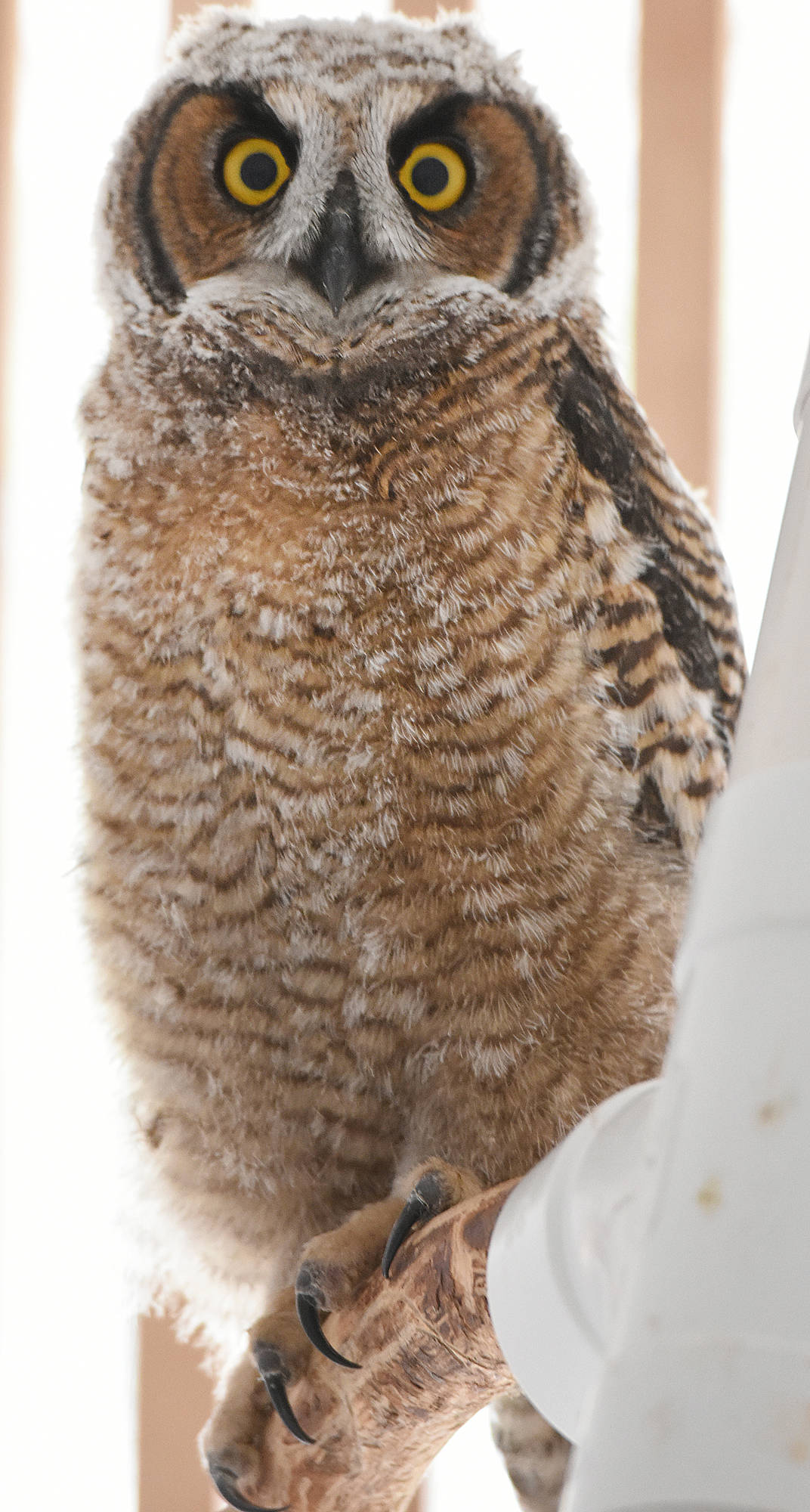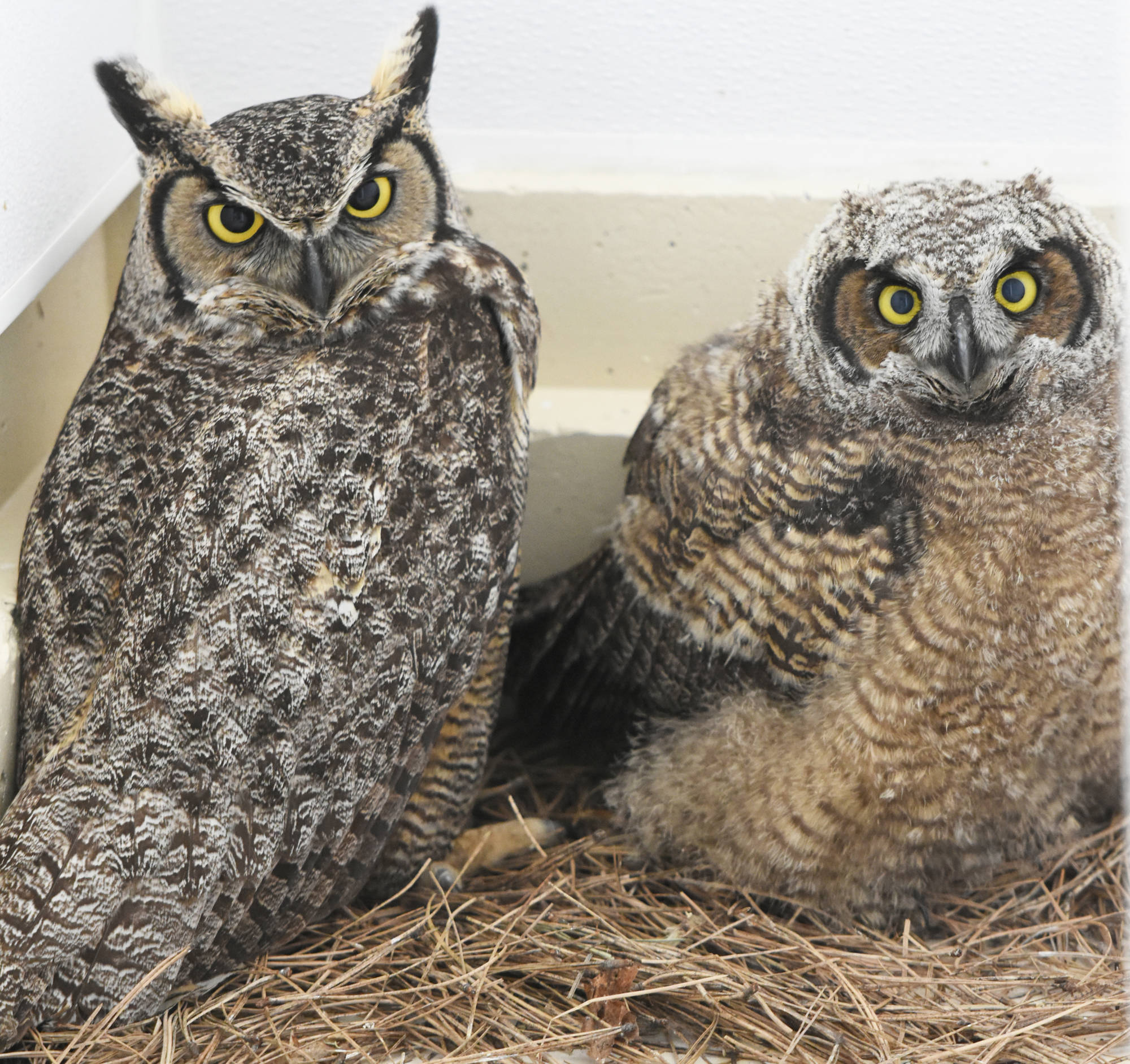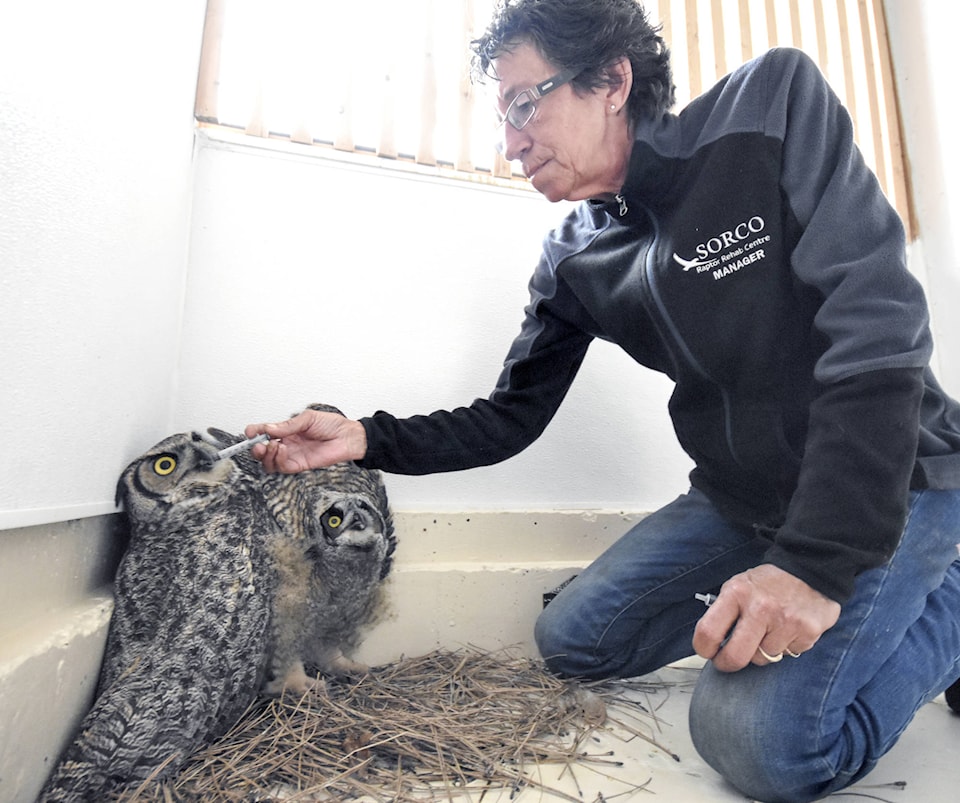“Cautiously optimistic” was the prognosis Tuesday for the recovery for three members of a great horned owl family, victims of suspected of Warfarin poisoning.
According to manager Dale Belvedere of the SORCO Raptor Rehab Centre where the trio are being cared for, the two owlets and the mother are eating and showing definite signs of improvement.
“Mom (who was blind when she was brought to the centre late last week) is seeing silhouettes, she’s kind of following us when we go in,” said Belvedere. “She’s still not flying but she is standing better and the babies seem to be okay, but they’re still very protective of her, whether they know something is wrong, I don’t know.”
The manager initially received a call from a person in Oliver advising an adult owl had been seen on a picnic table for three days and hadn’t moved. The owlets were in a nearby tree.
“When I got there she showed signs of being poisoned, her vision was impaired, she can’t see although her vision seems to have improved somewhat, she can’t fly and one talon she’s lost the use of,” said Belvedere initially. “We had to rescue her and we had no choice but to rescue the babies because they’re not hunting yet which means she and the father were probably hunting and giving them poison food.”
She believes the Warfarin, likely being used to kill rodents, was not on the property where the birds were found but had been spread around a neighbouring RV Park.
“So these people, not thinking, put down Warfarin, it makes them bleed internally and it can take a rat or a mouse up to three days to die, a very painful death and in turn that’s what happens to the raptors or any animal, it could be the neighbour’s cat that ingests it,” said Belvedere. “It’s unfortunate but people just don’t think, they think it’s the easy way because they don’t have to put down traps, they don’t have to bait them, they don’t have to take out the dead animal so they just throw this stuff down, they’re not realizing what they are doing.”
At the time the male had not been seen for five days and has not been located. It’s feared he may have succumbed to the poison.
Related: South Okanagan owl and raptor centre welcomes Bad Company
When she got the sick birds back to the centre Belvedere immediately began administering the antidote Vitamin K1 which she had on hand after a similar incident earlier this year in Kelowna. That bird did survive and will hopefully soon be released.
“The last one (poisoned owl) we had the vision did come back and it was the same thing, she was totally blind when we got it and you could see it started to follow you and that’s what she’s doing so I’m hoping she will get her whole sight back,” said Belvedere. “Her pupils look much better than they did at the very beginning so I don’t see why not, with the antidote we got it into her very quickly.”
The owls are now down to a single dose of antidote a day and Belvedere is hoping the mother will begin to fly within the next three to five days.
The treatment regime lasts for 21 days.


